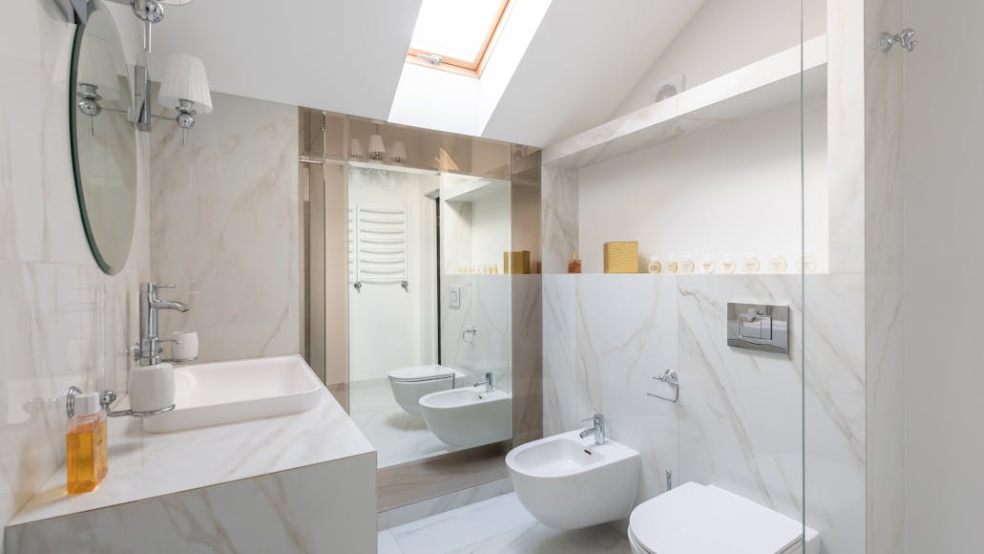
Reimagining Comfort and Accessibility in Modern Bathrooms
Bathrooms are no longer just functional spaces; they have evolved into places that blend comfort, accessibility, and style. In modern design, it’s important that bathrooms cater to everyone, regardless of physical ability or age. The following exploration dives into how the concept of comfort and accessibility is being reimagined in today’s bathrooms.
Designing for Accessibility and Comfort
Accessibility in bathrooms is not just about making them easy to use for people with disabilities; it’s about creating a space that feels welcoming and provides ease of use for all users, regardless of their physical abilities. The design process today goes beyond the basics of ramps and grab bars, incorporating features that ensure comfort and usability.
One way to make bathrooms more accessible is through the use of universal design principles. This approach takes into account the needs of people of all ages and abilities, ensuring that features are easy to access and use. For instance, sinks and mirrors are installed at adjustable heights to accommodate both seated and standing individuals. This simple change increases comfort for a wide variety of users. For those seeking enhanced accessibility and comfort, products like the walk-in baths available at Posh offer an ideal solution, combining safety with luxury to create a more accessible bathing experience.
Innovative Fixtures and Technology
Modern bathrooms are seeing the integration of innovative fixtures and advanced technology that enhance both comfort and accessibility. Smart toilets with built-in bidets and heated seats have become increasingly popular. These provide added comfort and promote hygiene and independence, as users can easily control water temperature, pressure, and seat warmth.
Another game-changing innovation is touchless technology. Automatic faucets, soap dispensers, and lighting systems allow users to engage with bathroom fixtures without touching them, which reduces the risk of germs and makes the space more hygienic. This feature is especially helpful for those with limited mobility or those using a wheelchair, as it reduces the need for excessive reaching or bending.
Flooring and Shower Accessibility
For many people with mobility challenges, bathroom floors, and showers can be a source of frustration and danger. Slip-resistant flooring is now a must-have in many modern bathroom designs, ensuring a safe and stable surface for users. Materials like textured tiles or vinyl flooring not only help prevent slips but are also comfortable underfoot, creating a more luxurious and secure environment.
Walk-in showers are another key component of accessible bathroom design. With zero-threshold entrances and seating options, these showers allow for a safe, comfortable bathing experience for people who have difficulty stepping over a traditional tub. Rainfall showerheads or handheld showerheads that are adjustable in height further enhance the experience, allowing users to maintain independence while enjoying a relaxing bath.
Lighting for Ease and Ambiance
Lighting plays a crucial role in both the aesthetic and functional aspects of bathroom design. Proper illumination is essential for safety and accessibility, particularly for those with visual impairments. Installations like motion-sensor lighting or LED strips around mirrors ensure that the bathroom is well-lit at all times without requiring manual adjustments.
In addition to practical lighting, ambiance plays a significant role in making the bathroom a comforting space. Layered lighting, including accent and task lighting, can help create a soothing environment. The ability to adjust lighting to suit different needs—whether it’s =a bright light for shaving or a softer tone for relaxation—adds another level of comfort.
Conclusion
Reimagining comfort and accessibility in modern bathrooms is about enhancing the user experience through thoughtful, innovative design. By integrating universal design principles, cutting-edge technology, and safety features, bathrooms can be transformed into spaces that are not only more accessible but also more comfortable for everyone. As the demand for more inclusive spaces increases, the future of bathroom design looks brighter, offering both functionality and luxury in equal measure.














